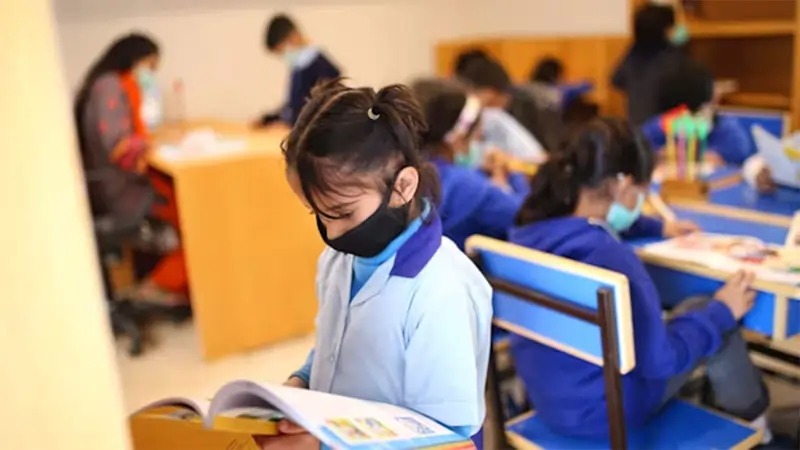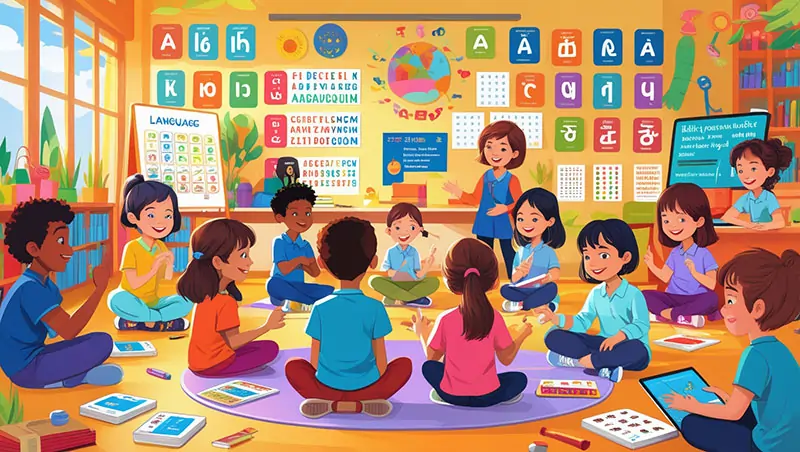Balancing Academic Excellence and Festive Fun: A Parent’s Guide to Year-Round Learning
The end-of-year holiday season brings a magical mix of excitement, celebration, and well-deserved rest for children. Yet for many parents, this festive period also raises an important question: how do we keep our children engaged in meaningful learning without dampening their holiday spirit? The answer lies not in choosing between academics and fun, but in understanding how both elements can coexist harmoniously throughout the year.
As we navigate the demands of modern education, finding the right balance between structured learning and creative play becomes increasingly vital. Children thrive when they experience education as an adventure rather than a burden, and when festive seasons become opportunities for discovery rather than complete academic disengagement. This comprehensive guide explores practical strategies for maintaining educational momentum while ensuring your children enjoy the carefree joy that holidays are meant to bring.
The Foundation of Consistent Academic Progress
Academic success rarely happens in isolation or through cramming sessions alone. Instead, it develops through consistent, well-paced learning that builds upon itself over time. Children who maintain steady educational engagement throughout the year tend to experience less stress during examination periods and develop stronger retention of key concepts.
The reality is that learning gaps can form surprisingly quickly when academic skills remain unpracticed for extended periods. Research in educational psychology consistently shows that students who take complete breaks from academic work during holidays often experience what educators call “summer learning loss” or “holiday slide.” This phenomenon affects children across all age groups, though its impact varies depending on the subject matter and the individual child’s learning patterns.
Mathematics and language skills are particularly susceptible to this regression. Mathematical concepts require regular practice to maintain fluency, while language abilities—including reading comprehension, vocabulary retention, and written expression—benefit enormously from continuous use. When children step away from these fundamental skills for several weeks, their brains must work harder to retrieve and apply information that was once readily accessible.
However, the solution isn’t to transform holidays into an extension of the school term. Rather, parents should view breaks as opportunities to reinforce learning through different, more engaging approaches. The key is maintaining intellectual stimulation without replicating the formal classroom environment that children need respite from.
Creating a sustainable learning routine involves understanding your child’s individual needs, academic goals, and learning style. Some children benefit from structured daily sessions that maintain a sense of routine, while others thrive with more flexible, interest-led exploration. The most effective approach often combines elements of both, providing enough structure to ensure progress while allowing sufficient freedom for children to pursue topics that genuinely excite them.

Strengthening Core Academic Skills Throughout the School Year
While holidays offer unique learning opportunities, the foundation of academic excellence is built during the regular school year. This is particularly true for subjects that require cumulative knowledge and consistent practice. English language proficiency, for instance, demands ongoing attention to multiple skill areas including grammar, comprehension, vocabulary, and composition.
For students preparing for significant examinations, targeted academic support can make a substantial difference in both performance and confidence. Parents in Singapore and similar education-focused environments often recognize that supplementary instruction helps children master complex concepts more thoroughly than classroom teaching alone might achieve. When considering additional academic support for critical examinations, many families choose to sign up for O-level English tuition at Indigo Education Group, where experienced educators provide structured guidance tailored to examination requirements and individual learning needs.
The decision to invest in supplementary education reflects a broader understanding that different children benefit from different teaching approaches. Some students flourish with one-on-one attention that allows them to ask questions freely and progress at their own pace. Others gain confidence from small group settings where collaborative learning and peer interaction enhance their understanding. Quality educational centers recognize these varying needs and adapt their teaching methodologies accordingly.
Beyond formal tuition, there are numerous ways parents can support English language development at home. Encouraging daily reading habits exposes children to diverse vocabulary and sentence structures while fostering a love for literature. Family discussions about current events, books, or films help children practice articulating their thoughts clearly and persuasively. Even simple activities like writing thank-you notes, maintaining a journal, or creating stories together contribute to developing strong written communication skills.
The goal isn’t to overwhelm children with constant academic pressure but to create an environment where learning feels natural and rewarding. When children see their parents valuing education and demonstrating curiosity about the world, they internalize these attitudes and carry them into their own educational journeys.

Making Holiday Seasons Educational Without Sacrificing Joy
The festive season presents a unique opportunity to blend learning with celebration in ways that feel entirely natural to children. Rather than viewing holidays as an interruption to education, savvy parents recognize them as rich learning environments where real-world applications of academic concepts become visible and meaningful.
Holiday preparation itself offers countless teachable moments. Planning a festive meal involves measurement, fractions, and timing—all mathematical concepts that children can observe and participate in directly. Shopping for gifts introduces budgeting, comparison shopping, and financial literacy. Decorating spaces requires spatial reasoning, pattern recognition, and creative problem-solving. These activities teach valuable skills while contributing to family traditions and holiday excitement.
Cultural and historical learning naturally accompanies holiday celebrations as well. Children who understand the origins and significance of the traditions they’re observing develop broader cultural awareness and critical thinking skills. Researching how different communities celebrate similar holidays around the world expands their perspective and encourages empathy and global consciousness.
The arts flourish during festive seasons, offering children opportunities to develop creativity alongside academic skills. Crafting decorations involves following instructions, measuring materials, and executing multi-step processes—all skills that translate directly to academic work. Musical performances and holiday concerts introduce or reinforce musical literacy, memorization techniques, and public presentation skills. Writing holiday cards or stories strengthens composition abilities while serving a meaningful purpose that children can appreciate immediately.
Perhaps most importantly, holidays provide opportunities for unstructured play and creative exploration that are increasingly scarce in children’s scheduled lives. This free time isn’t wasted; it’s essential for cognitive development, emotional regulation, and the kind of innovative thinking that structured activities cannot fully cultivate. When children have space to imagine, create, and explore without predetermined outcomes, they develop problem-solving abilities and resilience that serve them throughout their lives.

Bringing Academic Concepts Into Festive Activities
The holiday season brims with opportunities to practice academic skills in contexts that feel celebratory rather than instructional. Smart parents leverage these natural learning moments to reinforce classroom concepts while maintaining the joy and spontaneity that make holidays special.
Mathematics particularly lends itself to holiday integration. The festive season is filled with counting, measuring, calculating, and estimating—from determining how many cookies a recipe yields to calculating discounts during holiday shopping. Children who struggle with abstract mathematical concepts in textbooks often grasp them more readily when applied to real situations they care about, like figuring out whether they have enough allowance saved for gifts they want to purchase.
For families seeking structured yet entertaining ways to maintain mathematical thinking during December, incorporating math christmas activities transforms learning into play. These activities range from creating mathematical patterns with holiday decorations to calculating the cost per serving of festive treats, all designed to maintain numerical fluency while celebrating the season. When children solve puzzles involving holiday themes or use geometry to create perfect paper snowflakes, they’re developing critical thinking skills without experiencing the task as academic work.
Science naturally integrates into holiday activities as well. Baking becomes a chemistry lesson as children observe how ingredients transform through heat and chemical reactions. Discussing why certain climates experience snow while others don’t introduces meteorology and geography. Building gingerbread houses involves engineering principles and structural stability testing. Even decorating with lights provides opportunities to explore circuits, electricity, and energy efficiency.
Language arts continue developing through holiday-related reading and writing. Children’s literature offers countless holiday-themed stories that introduce new vocabulary, explore diverse cultural traditions, and model strong narrative structures. Encouraging children to write letters to relatives, create their own holiday stories, or maintain a journal documenting their break activities keeps writing skills active while producing work they feel personally invested in.
The beauty of these integrated learning approaches is their invisibility to children. When academic concepts appear naturally within activities they already enjoy, learning becomes seamless rather than segregated from “real life.” This integration helps children understand that education isn’t confined to classrooms and textbooks but rather permeates every aspect of their daily experiences.

Creating Sustainable Learning Habits That Last Beyond the Holidays
While holiday-specific activities provide excellent short-term engagement, the ultimate goal is cultivating lifelong learning habits that persist regardless of the season. The attitudes and approaches children develop during formative years significantly influence their academic trajectory and relationship with education throughout their lives.
Establishing consistent routines creates security and predictability that children need to thrive. Even during holidays, maintaining some structure—such as designated reading time before bed or a morning creative activity—helps children retain productive habits without feeling overly restricted. The key is flexibility; routines should provide framework rather than rigidity, adapting to the natural rhythms of holiday schedules while maintaining core learning touchpoints.
Parental modeling profoundly impacts children’s attitudes toward learning. When children observe parents reading for pleasure, engaging in creative hobbies, or expressing curiosity about how things work, they internalize the message that learning is a valuable, lifelong pursuit rather than a childhood obligation. Families who discuss what they’re learning, share interesting discoveries, and explore new topics together create cultures of curiosity that naturally motivate children’s educational engagement.
Technology offers both opportunities and challenges for modern families navigating educational engagement. While educational apps and programs can provide valuable practice and instruction, excessive screen time displaces other important activities and can reduce attention spans. The most effective approach balances digital resources with hands-on experiences, outdoor exploration, and face-to-face interaction. When technology is used intentionally to support specific learning goals rather than as default entertainment, it becomes a powerful educational tool rather than a distraction.
Importantly, sustainable learning habits must include adequate rest, play, and downtime. Children’s brains need periods of unstructured activity to consolidate learning, process experiences, and develop creativity. Academic pressure that eliminates leisure time ultimately becomes counterproductive, leading to burnout, reduced motivation, and negative associations with learning. The goal is steady, balanced engagement rather than relentless academic intensity.
Recognizing Individual Learning Needs and Preferences
Every child approaches learning differently, and effective educational strategies acknowledge these individual variations. Some children thrive with visual materials and benefit from diagrams, charts, and color-coded notes. Others learn best through auditory input, retaining information more effectively when they hear explanations or discuss concepts aloud. Kinesthetic learners need physical movement and hands-on manipulation to truly grasp abstract concepts.
Understanding your child’s learning style allows you to tailor holiday educational activities to their strengths while gently developing areas that challenge them. A visual learner might enjoy creating colorful holiday countdown calendars that incorporate mathematical counting. An auditory learner could benefit from storytelling activities or listening to audiobooks during quiet holiday moments. Kinesthetic learners thrive with cooking projects, building activities, and outdoor exploration that gets their bodies moving while their minds engage.
Age and developmental stage also significantly influence appropriate learning approaches. Younger children need shorter activity sessions with more frequent breaks, concrete examples rather than abstract concepts, and activities that engage multiple senses simultaneously. Older children can handle more complex projects, abstract thinking, and longer periods of focused work, though they still benefit from variety and hands-on application of theoretical knowledge.
Cultural background and family values should inform educational approaches as well. Families who prioritize certain subjects, traditions, or skills naturally integrate these priorities into their holiday activities and daily routines. Rather than following a one-size-fits-all educational model, successful families create personalized approaches that reflect their unique values, circumstances, and goals for their children’s development.
Planning Ahead for Academic Success
Forward-thinking educational planning helps families avoid the stress of last-minute cramming or panic about falling behind. As holidays approach, reviewing what your child will study in upcoming terms allows you to identify topics where preview exposure might be helpful. This doesn’t mean pre-teaching entire curricula, but rather familiarizing children with concepts they’ll encounter, making classroom introduction easier and building confidence.
Similarly, holidays offer opportunities to address areas where children struggled during previous terms. If your child found certain mathematical concepts or grammar rules particularly challenging, the break provides time for targeted review without the pressure of keeping pace with advancing classroom material. This remedial work feels less punitive when framed as holiday “catch-up” rather than evidence of failure, and the extra time often allows concepts to finally click.
Communication with teachers provides valuable insight into your child’s academic status and areas needing attention. Many educators appreciate when parents proactively ask about skills worth practicing during breaks or subjects where their child would benefit from additional support. This partnership between home and school creates consistent messaging and reinforcement that accelerates learning.
Setting realistic, achievable goals for holiday learning prevents both complacency and overwhelm. Rather than vague intentions to “do more math” or “read more,” specific targets like “complete three chapter books” or “practice multiplication tables for 15 minutes daily” provide clear direction and measurable progress. Involving children in this goal-setting process increases their investment and helps them develop self-regulation and planning skills.
Conclusion: Embracing the Harmony of Learning and Joy
The apparent tension between academic achievement and holiday enjoyment dissolves when we recognize that learning and joy need not exist in opposition. Children who experience education as discovery, exploration, and meaningful engagement naturally maintain their curiosity and skills throughout the year, regardless of whether school is in session.
The most successful educational approaches honor children’s need for both structure and freedom, both challenge and rest, both guided instruction and independent exploration. By thoughtfully integrating learning into the natural rhythms of daily life and seasonal celebrations, parents help their children develop positive relationships with education that sustain them through academic challenges and beyond formal schooling.
As you navigate the upcoming holiday season, remember that perfect balance is a myth. Some days will tilt heavily toward pure celebration and relaxation, while others might involve more structured learning activities. This variation itself teaches children important lessons about flexibility, time management, and the multifaceted nature of life. What matters most is the overall pattern—a sustained commitment to supporting your child’s intellectual, emotional, and creative development while ensuring they experience the wonder, rest, and joy that childhood should contain.
The gift of balanced education extends far beyond test scores and academic achievements. Children who grow up in environments where learning is valued but not fetishized, where holidays include both education and pure fun, and where curiosity is encouraged alongside discipline develop into well-rounded individuals prepared for the complexities of modern life. This holiday season, give your children the gift of joyful learning—an approach to education that will serve them not just through their school years, but throughout their entire lives.


